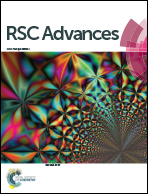Molecular chain model construction, thermo-stability, and thermo-oxidative degradation mechanism of poly(vinyl chloride)
Abstract
Thermo-oxidative degradation of poly(vinyl chloride) (PVC) is inevitable during its processing. We focused on the relationship between the structure and properties of PVC, as well as on the thermal-oxidative degradation mechanism of PVC. Two models, the unsaturated and oxygen-containing structure models, were successfully constructed by pretreatment under different atmospheres. The thermal stability of treated PVC was determined by thermogravimetric analysis. An X-ray photoelectron spectroscopy (XPS) processing method was also used to analyze the type of functional groups that may be produced during thermal-oxidative degradation, whereas XPS and Fourier-transform infrared (FTIR) spectrometry were used to determine the trend in the content variation of functional groups of samples. The two structure models revealed that the thermal properties were greatly influenced by oxygen-containing groups compared with the unsaturated structures, and the position of oxygen molecule attack on the PVC main chain is not primarily located on the unsaturated structure or the α carbon atom of the unsaturated sides. XPS and FTIR results can possibly provide evidence for the thermo-oxidative degradation mechanism of PVC. Moreover, a carbonyl group was generated when the methylene or methine structure was attacked by an oxygen molecule, rendering the PVC resins unstable.


 Please wait while we load your content...
Please wait while we load your content...